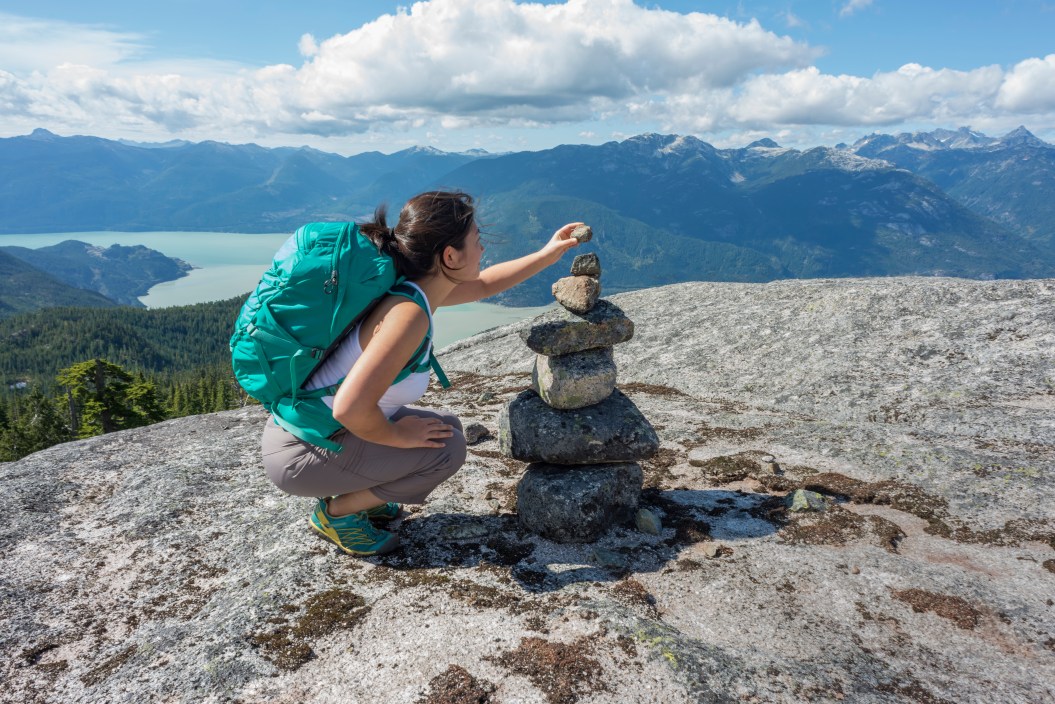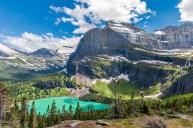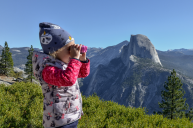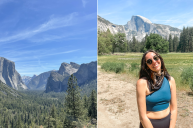If you've been hiking in a national park, you've probably noticed rocks stacked in pyramid or cone shape along the trail. Called cairns, these stacked rocks meant many different things throughout history, to many different cultures. These days, official cairns inside a park are built by park employees to mark the way on hard-to-follow trails so people don't get lost.
But more and more, we see unknowing visitors—especially kids—building cairns along the path or at a lookout, too. Some argue building cairns violates Leave No Trace principles, wherein you should leave the landscape exactly how you found it.
And even certain national parks don't want cairns on their trails—a recent Facebook post by Yosemite National Park encourages visitors to knock down stacked rocks found within their park boundaries.
So are cairns helpful for navigation? Or do they disrupt nature?
What Is the Meaning Behind Stacking Stones?
Cairns, which comes from a Scottish Gaelic word meaning "heap of stone," have meant many things to different cultures over the years. Most commonly, cairns have been used to keep people on the correct pathway, a practice that dates back to ancient times.
The stones were used by Native Americans to mark trails and paths, and where food and water caches were located. While settlers used them as barriers, rocks have also been used to mark burial sites.
The stacking rocks of also holds spiritual meaning for some cultures: Buddhists believe it holds good luck for the stacker and for their family.
Currently, many parks use them as trail markers. It's common to find stacks at river crossings, on mountaintops, and in deserts.
But according to the National Park Service (NPS), each park has different rules regarding its cairns—which is where a lot of the confusion comes in).
In the national parks of El Malpais, Hawai'i Volcanoes, Zion, Canyonlands, and Acadia, cairns are commonly constructed by park employees to guide hikers along the trail.
Acadia's stacked rocks hold more than just directional significance: They also have a historical component. The lead author of Acadia's trail maps, Waldron Bates, set the standard for how cairns were supposed to be built in 1896. The Bates cairns are rocks that look like a stone bridge, with two rocks at the base and a longer rock joining them along with a small pointer stone on top.
However, the parks replaced the Bates cairns with the conical stacks we see today sometime in the 1950s or '60s.
So while cairns are super common at some national parks, others don't use the stones to mark trails at all. For example, while cairns are often used at Zion or Canyonlands, another park in Utah, Capitol Reef National Park, does not rely on the stacks of stones; any you see here are likely ornamental and, in fact, can not be trusted to be a guide for the right path.
Meanwhile, right next door, Colorado's Pikes Peak uses cairns to help hikers find their way on trails that are hard to navigate any other way.
To determine the best path, speak to a park ranger or grab a trail map. Some trail apps may be useful as well, especially if you can use them in offline mode.
So, Should You Knock Rock Cairns Down?
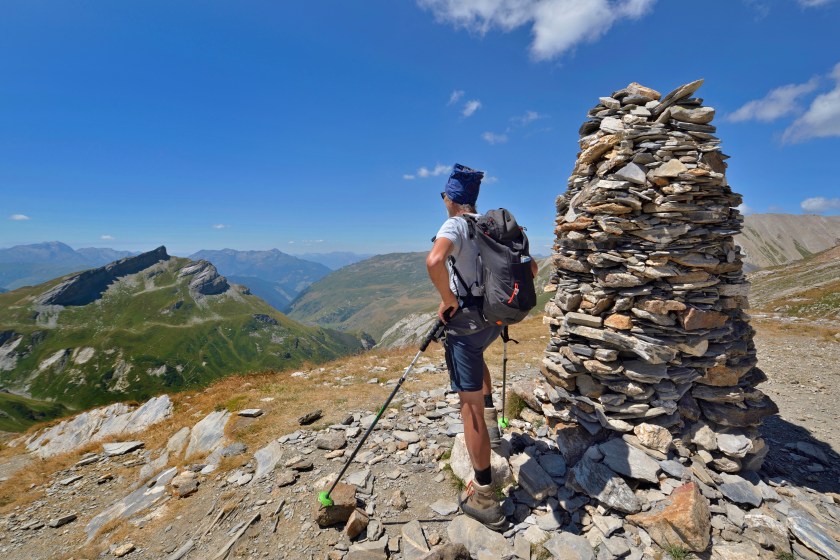
Sanddebeautheil via Getty Images
The idea of knocking down cairns has become a popular topic. In Yosemite National Park's recent video, the popular park is encouraging visitors to knock down any stacked rocks they might see within the park.
They explain that it's in the name of Leave No Trace principles, as Wilderness Restoration Rangers are working to return the landscape to its natural state. Yosemite officials wrote in the post, "According to Leave No Trace ethics when we recreate in wilderness spaces, our goal is to leave no signs of our impact on the land and respect other creatures living in it."
So why this particular cairn, you may ask? Yosemite officials explain: "Unfortunately, this dramatically oversized cairn is a mark of human impact and is distracting in a wilderness setting. Building rock cairns also disturbs small insects, reptiles, and microorganisms that call the underside home!"
Of course, not all cairns are egregious blights on the landscape. When used properly, they serve as directional tools—which is why the National Park Service has asked that if you're visiting any park other than Yosemite, you leave the cairns in place where they are.
Instead, visitors should focus on the last part of the post, which simply cautions against building your own cairns in the park or on any trail. That way, there's no confusion about if a cairn is an official trail marker or an art piece left over by a visitor.
Don't Build Your Own: Leave No Trace
In the post, Yosemite officials write, "When used appropriately, rock cairns are great for navigation, safety, and delineating a new or hard-to-follow trail. In general, rock cairns should only be constructed by rangers and trail workers."
While it may be tempting to build your own stone piles when you get to your destination or even along your route, it's best to leave the rocks where they lie.
Also, many rocks serve as habitats for bugs, reptiles, and other animals. Whether you're hiking or backpacking, it's best to leave the ecosystem undisturbed.
Rock balancing can be a fun pastime and is always great for a social media pic, but it really has no place in natural environments. Some parks even consider unauthorized stacks of rocks to be vandalism.
Conservationists and park rangers prefer that park visitors practice Leave No Trace principles while spending time in the outdoors. Those principles include:
- Not tampering with existing cairns.
- Not adding to cairns.
- Not building your own cairn.
In general, remember to take back out everything you bring in with you.
READ MORE: 13 Hiking Essentials You Should Bring On Every Day Hike
